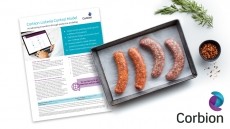HPS: Lab reports of Campylobacter up almost 10% last year

Last year 5,796 lab reports were received by HPS which was an increase of 485 (9.1%) compared to 2016 when 5,311 isolates were reported.
The increase follows a decline in each of the previous two years. The number remains below the peak of 6,636 reports in 2014.
Incidence rates of Campylobacter infection are higher in children under five compared with older children and young adults and increases with the highest rates among those 50 years and older.
Overall rates are higher in males, with 120 per 100,000 compared to 96.4 per 100,000 for females but reasons for the higher rates are unknown, said HPS.
Most cases of Campylobacter infection are sporadic with few identified general outbreaks. In 2017, no outbreaks were reported to ObSurv (the surveillance system for all general outbreaks of infectious intestinal disease in Scotland).
The last general outbreak reported to ObSurv was in 2014. Since it was established in 1996 there have been 35 general outbreaks.
UK retailers on Campylobacter levels
In related news, the top nine retailers across the UK published results earlier this month for Campylobacter contamination in fresh whole chickens (covering October to December 2017).
Figures show on average 4.5% of UK produced chickens tested positive for the highest level of contamination (more than 1,000 colony forming units per gram (cfu/g) of Campylobacter).
The rate for the previous quarter (July-September 17) was 5.14%.
Reduction is consistent with research that shows a lower level of contamination over cooler months of the year.
Contamination levels of 10-99 cfu/g were down from 30.5% to 24.3% and of 100-1000 cfu/g went from 20.3% to 18.5%. However, rates of <10 cfu/g increased from 44% to 52.7%.
Michael Wight, director of policy and science at the Food Standards Agency, said: “We will continue to monitor the results and procedures of the major retailers and encourage them to maintain the significant progress made so far. We are actively working across smaller poultry businesses so that they can also contribute to reducing Campylobacter levels.”
Salmonella in Scotland
Meanwhile, during 2017, the Scottish Salmonella, Shigella and Clostridium difficile Reference Laboratory (SSSCDRL) reported 838 cases of human non-typhoidal Salmonella to HPS, which is similar to 2016 when there were 839 reports.
This followed an increase since 2014 when there had been 717 reports.
There were 247 reports of Salmonella Enteritidis last year compared with 362 in 2016, a decrease of 32%.
Despite the decline S. Enteritidis remains the most common serogroup accounting for 29% of reports in 2017.
Salmonella Typhimurium increased by 42%, with 182 reports, compared to 128 in 2016 and remains the second most commonly reported serogroup accounting for 22%.
Rates of infection of Salmonella vary across the population with overall higher rates in children under five years compared with older children.
In 2017 there were eight general outbreaks of Salmonella reported to ObSurv compared to seven in 2016. Five outbreaks in 2017 were part of UK incidents.






















